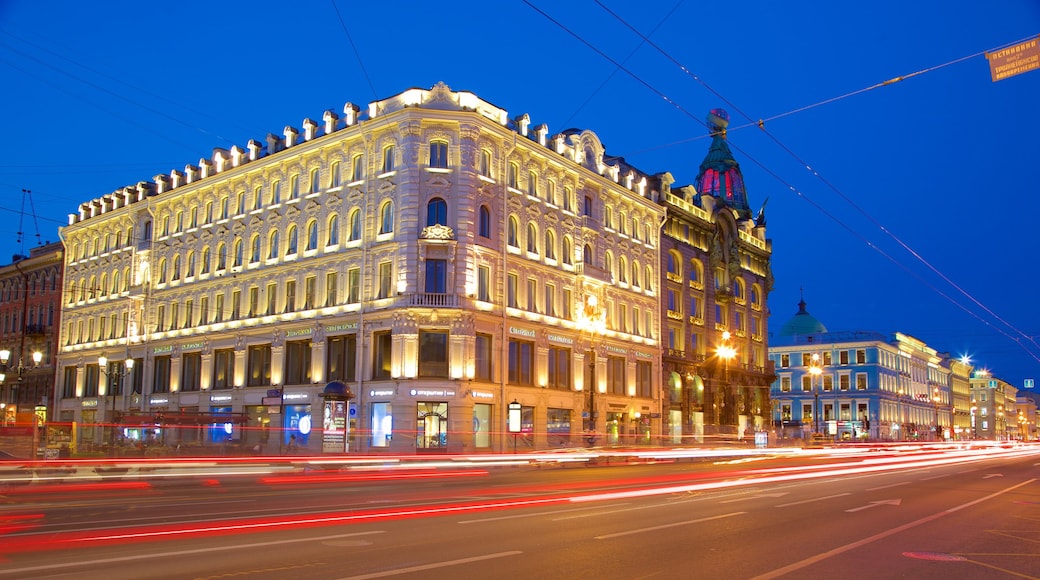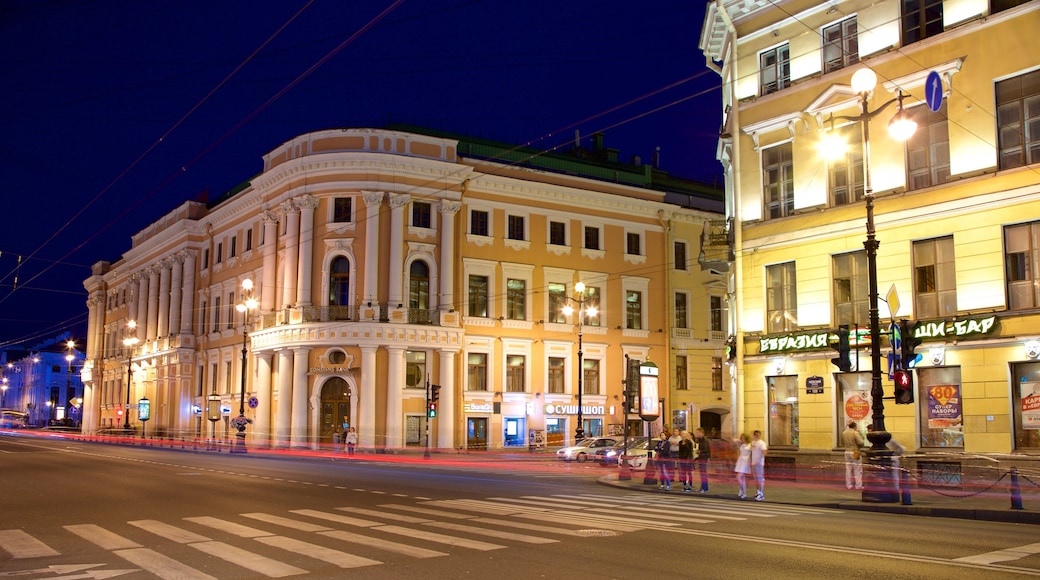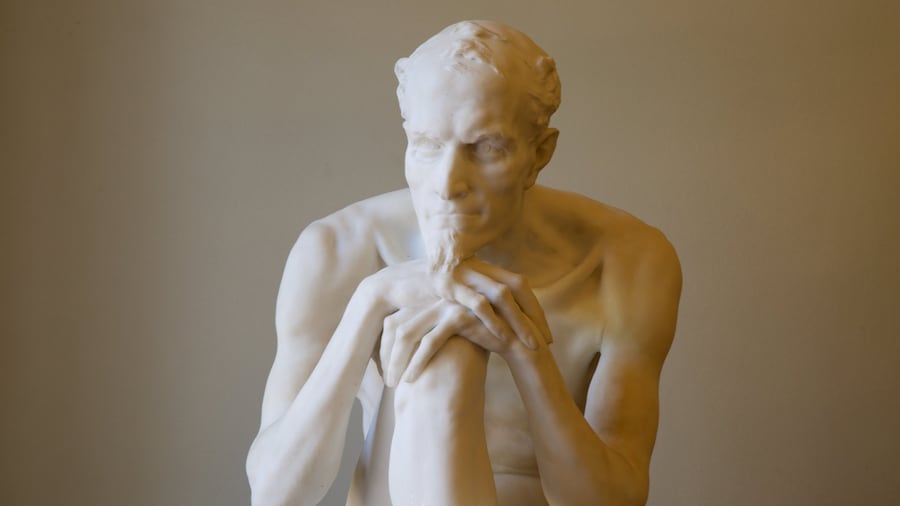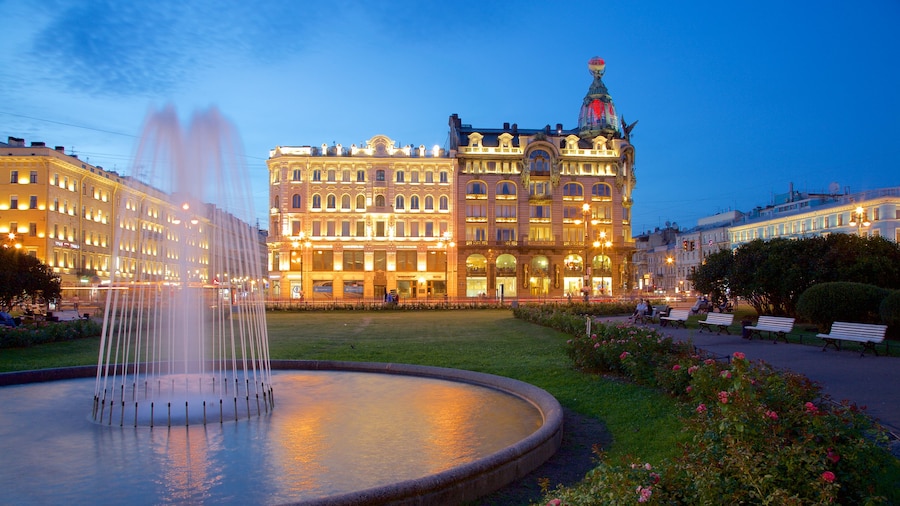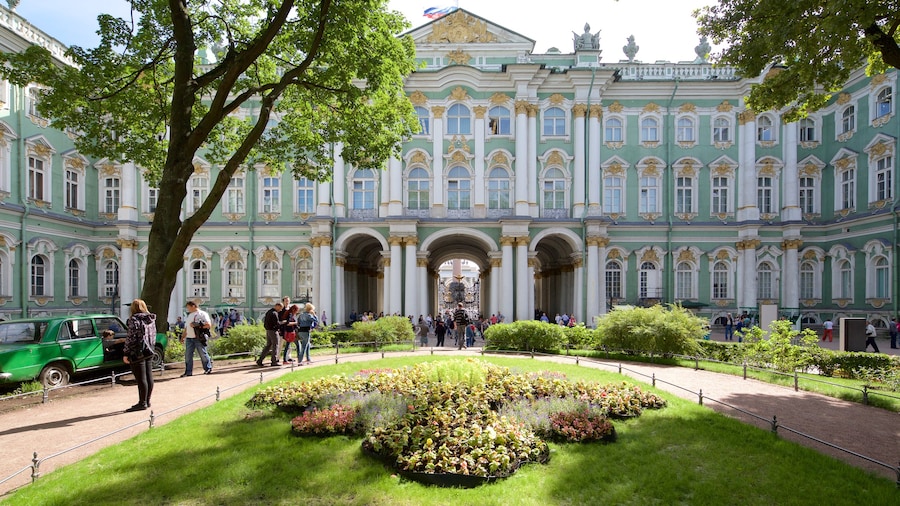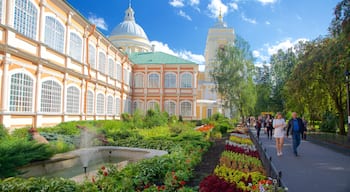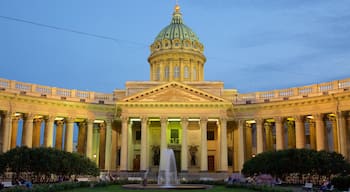Walk one of Russia’s most famous streets and take in the sights and sounds of central St. Petersburg.
Nevsky Prospekt contains some of St. Petersburg’s most notable landmarks and is a major attraction in its own right. From humble beginnings as a regular road, it has become the epicentre of the city, as is evidenced by the constant stream of people and vehicles. Come here to experience its bustling urban atmosphere and to check out the nearby shops and sights.
Look around the developed street today and it’s hard to imagine that it was once just a forest road haunted by wolves. At times, inhabitants have been able to sail down the street thanks to floods. The thoroughfare has had various names throughout Russia’s history but has become a steadfast symbol of St. Petersburg, beloved by notable Russians such as Fyodor Dostoyevksy and Nikolai Gogol. The street we see today was designed by architect Alexandre Jean Baptiste LeBlond, commissioned by Peter the Great.
Along this well-worn path, there is something for everyone. If you are a fan of retail therapy, shop at the biggest department store in the city, Gostiny Dvor. This grand building takes up an entire block of Nevsky Prospekt with 164,690 square feet (15,300 square metres) of space dedicated to retail.
Stroll further along to see another imposing edifice, that of the Kazan Cathedral. Its huge colonnade reaches out from a neat green dome and overlooks a well-maintained lawn. Go inside to learn more in its religious museum.
Venture into the Stroganov Palace to explore Russia’s history. A bright white and pink building on the Nevsky Prospekt, it is hard to miss. Visit its opulent chambers and discover a huge catalogue of rare stones and art by the likes of Rembrandt.
If all the sightseeing leaves you hungry, get something to eat from the Literaturnaya Café or Literary Café, just a short walk from the Stroganov Palace. The café serves a range of Russian treats and visitors can rub shoulders with a waxwork of poet Alexander Pushkin, a former patron.
Nevsky Prospekt begins at the historical Admiralty naval building and goes to the religious Alexander Nevsky Lavra churches and monastery, via the Moscow Railway Station. There are six metro stations, making it very accessible by public transport.
